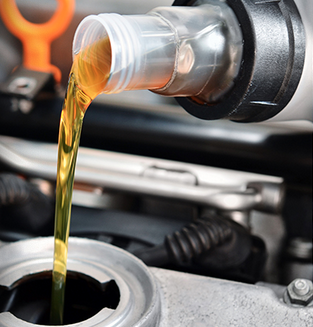Key Points/Overview
Methanol is used to produce a variety of other chemicals, including acetic acid. Methanol is primarily used as an industrial solvent to help create inks, resins, adhesives and dyes. It is also used as a solvent in the manufacture of important pharmaceutical ingredients and products such as cholesterol, streptomycin, vitamins and hormones.
Methanol can be used as a fuel for vehicles and boats, and it can be blended into gasoline to produce an efficient fuel known as methyl tertiary butyl ether (MTBE), which can have lower emissions than conventional gasoline. Methanol is also used in biodiesel, a renewable fuel made from plants or animal fat that can be used in place of, or blended into, conventional fuel.
Methanol’s chemical properties allow it to lower the freezing point of water-based liquids and increase their boiling point. Because of these attributes, methanol can be used as an antifreeze in windshield washer fluid to prevent the cleaning fluid from freezing. Methanol is also injected into natural gas pipelines to lower the freezing point of water during oil and gas transport.
OSHA monitors and regulates methanol exposure in industrial setting and sets permissible exposure limits to help protect worker safety.
Uses & Benefits

Antifreeze
Methanol has chemical properties which allow it to lower the freezing point of a water-based liquid and increase its boiling point. These attributes lead methanol to be used as an antifreeze in windshield washer fluid to keep the cleaning fluid from freezing. It is also injected in natural gas pipelines, where it lowers the freezing point of water during oil and gas transport.

Solvent
Methanol is primarily used as an industrial solvent to help create inks, resins, adhesives, and dyes. It is also used as a solvent in the manufacture of important pharmaceutical ingredients and products such as cholesterol, streptomycin, vitamins and hormones.

Fuel
Roughly 45 percent of the world’s methanol is used in energy-related applications. Methanol can be used as a type of vehicle fuel or marine fuel for boats. It can also be blended into gasoline to produce an efficient fuel known as methyl tertiary butyl ether (MTBE) which can have lower emissions than conventional gasoline. Methanol also is used in biodiesel, a renewable type of fuel made from plants or animal fats that can be used in place of, or blended into, conventional fuel.

Food
Methanol occurs naturally in many foods, including fruits and vegetables. Dietary methanol helps to regulate human gene activity . It is also created in the human digestive system to help metabolize food.

Safety Information
The U.S. Occupational Safety and Health Administration (OSHA) monitors and regulates methanol exposure in industrial settings. OSHA also sets permissible exposure limits on methanol in industrial settings to help protect worker safety. The National Institute for Occupational Safety and Health (NIOSH) has several safety resources and guides for workers who use methanol in industrial settings.
Exposure to methanol at the levels found in the diet from fruits and vegetables, both naturally occurring and from currently permitted levels of aspartame, would not be expected to result in adverse effects, according to the Committee on Toxicity of Chemicals in Food, Consumer Products and the Environment (COT), an independent scientific committee that provides advice to the Food Standards Agency, the Department of Health and other Government Departments and Agencies on matters concerning the toxicity of chemicals in the United Kingdom.


